WHAT IN THE DERMIS ARE THOSE?! DECIPHERING DERMATOLOGY TERMS
Ever wonder what that fancy medical jargon your dermatologist throws around actually means? You’re not alone! Let’s be honest, sometimes appointments feel like deciphering a secret code. But fear not, fellow human navigating the world of healthy skin! Today, the tables are turned. We’re diving into the world of dermatology terms, and by the end of this blog, you’ll be (almost) fluent in the language of healthy skin.
What in the dermis are those?! I recently stumbled upon a secret weapon used by our amazing medical assistants here at Smart Skin Dermatology: a glossary of dermatologic terms! We know our medical assistants are amazing. We expect a lot and they deliver, but I am always when I step back and consider just how expert they really are.
Now, the question is: would YOU have what it takes to be a Smart Skin Dermatology medical assistant? Buckle up and let’s find out!
GLOSSARY OF DERMATOLOGIC TERMS
Abscess
a closed pocket containing pus. Some abscesses are easily diagnosed clinically, as they are painful and may “come to a head” such that pus becomes visible, but deep and chronic abscesses may just look like a TUMOR clinically and require biopsy to distinguish them from neoplasm.
Acne
a chronic disorder of the hair follicles and sebaceous glands. Acne is characterized by black heads, pimple outbreaks, cysts, infected abscesses, and (sometimes) scarring.
Actinic Keratosis (AK)
small, dry, scaling lesions occurring on sun-exposed areas of the skin.
Alopecia
baldness.
Angioma
a benign tumor in the skin, made up of blood or lymph vessels.
Atopic dermatitis (eczema)
a skin disorder that is characterized by itching, scaling. thickening of the skin, and is usually located on the face, elbows, knees. and arms.
Atrophy
a diminution of tissue; waste away
Atypical
the simple, straightforward definition would be “unusual,” but “atypical” means much more than that. In a diagnosis, the use of the term atypical is a vague warning to the physician that the pathologist is worried about something, but not worried enough to say that the patient has cancer.
Atypical nevus
a mole that may appear pink, white, or skin colored that has irregularities determined by a histological examination. These moles are classified as mild, moderate, or severe atypical. Removal is recommended for moderate and severe atypical nevi.
Basal Cell Carcinoma
the most common form of skin cancer, characterized by small, shiny, raised bumps on the skin that are fragile and often bleed
Basal cells
these cells are found in the outer layer of skin. Basal cells are responsible for producing the squamous cells in the skin
Biopsy
a technique utilized to help the clinician diagnose an existing lesion, rash, or other dermatological condition. During a biopsy the area selected is numbed with a local anesthetic and a small piece of the area to be analyzed is removed. Types of biopsies include, shave, punch, and excision.
Blister
a fluid-filled bump.
Boil
tender, swollen areas that form around hair follicles bullousA large blister (a thin-walled sac filled with clear fluid).
Candidiasis (Also called yeast infection)
a skin infection caused by yeast that can occur in the skin folds, the navel, vagina, penis, mouth, and nail beds. carbuncles clusters of boils on the skin.
Carcinoma
a malignant NEOPLASM whose cells appear to be derived from
Epithelium
this word can be used by itself or as a suffix. Cancers composed of columnar epithelial cells are often called adenocarcinomas. Those of squamous cells are called squamous cell carcinomas.
Cavernous Hemangioma
a raised, red or purple mark in the skin, made up of enlarged blood vessels.
Cellulitis
bacterial infection of the skin that is characterized by swelling and tenderness.
Chemical Burns
burns due to strong acids or alkaline coming into contact with the skin and/or eyes
Chemical Peels
a procedure often used to minimize sun-damaged skin, irregular Pigment, and superficial scars. The top layer of skin is removed with a chemical application to the skin. By removing the top layer, the skin regenerates. often improving the skin’s appearance.
Cold Sore or Herpes Simplex
recurrent, small blisters around and in the mouth caused by the herpes simplex virus.
Collagen
a protein produced by skin cells that provide strength and resilience to the skin.
Comedone
a plug of keratin.
Contact Dermatitis
a rash or an inflammation of the skin caused by contact with various substances.
Crust (Also called scab)
a formation of dried blood, pus, or other skin fluid over a break in the skin.
Cryosurgery
the use of liquid nitrogen to destroy visible skin lesions. Commonly used for actinic keratoses, verruca vulgaris, and molluscum contagiosum.
Dermatitis
a number of skin conditions characterized by inflammation of the skin.
Dermatofibroma
small, red or brown bumps in the skin.
Dermis
the middle layer of skin, which is made up of blood vessels, lymph vessels, hair follicles, and sweat glands.
Dermoid cyst
a benign tumor made up of hairs, sweat glands, and sebaceous glands.
Drysol solution
aluminum chloride. Commonly used in the dermatology office to coagulate blood after biopsies and as a prescription used to treat excessive sweating.
Ecchymosis
a macular red or purple colored hemorrhage in the skin.
Eczema
a skin disorder that is characterized by itching, scaling, thickening of the skin, and is usually located on the face, elbows, knees, and arms.
ED&C- (electrodesiccation and curettage)
a technique used to treat certain types of superficial skin cancers. The area to be treated is injected with a local anesthetic. Curettes are used to destroy the lesion, and a hyfrecator is then used to attain hemostasis.
EIC- (Epidermal Inclusion Cyst)
a small benign cyst in the epidermis caused by blocked pilosebaceous follicles. Can become inflamed. May be removed by surgical excision.
Epidermis
the outer layer of skin, which is made up of the horny layer, squamous cells, and basal cells.
Epithelium
a specialized type of tissue that normally lines the surfaces and cavities of the body.
Erosion
a loss of epidermis, heals without scarring.
Erythema
the redness of the skin produced by vascular congestion Erythema Nodosuma skin condition, characterized by red bumps that usually appear on the shins.
Erythroderma
generalized redness of the skin.
Excoriation
a loss of substance of skin produced by scratching.
Exfoliation
a splitting off or separation of the keratin and skin surface.
Exanthem
a widespread rash
Excoriation
an area of the skin covered by a crust, or scab, usually caused by scratching.
Extraction
a method of removing unwanted skin lesions such as milia or comedones on the face. A small lancet is used to puncture the lesion. Then an instrument called a comedone extractor extracts the unwanted debris.
Fibrous Papule
a benign, small, firm, skin colored inflammation typically occurring on the nose of a middle aged person.
First-degree burns (Also called superficial burns)
burns that only affect the epidermis, or outer layer of skin. The burn site appears red, painful, dry, and absent of blisters. Mild sunburn is an example. Scarring is usually rare or minimal.
Fissure
a linear gap or split of skin surface.
Folliculitis
an inflammation of the hair follicles due to an infection or irritation.
Gangrenous
death of tissue, associated with loss of blood supply.
Granuloma annulare
a chronic skin condition characterized by small, raised bumps that form a ring with a normal or sunken center.
Hemangioma
a benign tumor of dilated blood vessels.
Herpes Zoster (Also called shingles)
a common viral infection of the nerves. characterized by a painful skin rash of small blisters anywhere on the body. It is a reactivation of chickenpox virus.
Hives
see urticaria.
Hidradenitis Suppurativa
a skin disease that most commonly affects areas bearing apocrine sweat glands or sebaceous glands, such as the underarms, breasts, inner thighs, groin and buttocks.
Hyfrecator
a small electrode that uses heat to destroy skin lesions and helps to stop bleeding.
Immune System
a collection of cells and proteins that works to protect the body from potentially harmful, infectious microorganisms, such as bacteria, viruses, and fungi.
Immunocompromised
an abnormal condition where one’s ability to fight infection is decreased. This can be due to a disease process, certain medications, or a condition present at birth.
Impetigo
a bacterial skin infection characterized by microscopic pus-filled blisters.
Inflammation
redness, swelling, heat, and pain in a tissue due to chemical or physical injury, infection, or allergic reaction.
Keloid
firm, elevated scar tissue that extends beyond the normal scar tissue.
Keratinocytes (Also called squamous cells.)
these are the primary cell types found in the epidermis the outer layer of skin.
Keratosis Pilaris
a common skin condition characterized by small, pointed bumps especially on the back and sides of the upper arms.
Lentigines
brown spots consisting of increased numbers of epidermal melanocytes.
Lice
tiny parasites that can infest the skin; characterized by intense itching.
Lichenification
skin that has thickened.
Lipomas
round or oval lumps under the skin caused by fatty deposits.
Macule
a circumscribed area of skin, different in color and texture of surrounding tissue, the smaller version of a patch.
Malignant Melanoma
a rare, but sometimes deadly, skin cancer that begins as a mole that turns cancerous.
Melanocytes
cells present in the epidermis that produce melanin (skin pigment).
Melasma
dark, brown, symmetrical patches of pigment on the face.
Milia
tiny, white, keratin filled cysts occurring on the face. May be treated by extraction
Moles
small skin marks caused by pigment-producing cells in the skin.
Necrosis
death of tissue or cells.
Nevus
a discoloration of the skin due to pigmentation that is more commonly known as a mole. A nevus may be flat or raised. Benign nevi does not require treatment. However, changing nevi may be biopsied for evaluation.
Nodule
a solid, raised bump, usually more than 0.5 cm in size.
Papilloma
a nipple like mass projecting from the skin.
Papule
small solid elevation of the skin, less than 0.5 cm in size
Paronychia
a skin infection around a finger or toenail.
Patch
a flat, discolored spot, more than 2 cm in size.
Pathology
the interpretation of a specimen to determine the cause of the change in the skin. This is done by a clinician skilled in the analysis of skin using microscopic examinations.
Pityriasis Rosea
a common skin condition characterized by scaly, pink, and inflamed skin.
Plaque
an elevated area of skin 2 cm more in size.
Port-wine stains
Also called nevi flammeus. permanent flat, pink, red, or purple marks on the skin.
Psoriasis
a chronic skin condition characterized by inflamed, red, raised areas that develop silvery scales.
Punch biopsy
utilizes a small device with a sharp circular edge to obtain a slightly deeper sample of tissue. Used to analyze tissue below the visible skin surface. A few sutures are required for this type of biopsy.
Purpura
condition of the skin characterized by hemorrhages. The skin may appear red, darkening to purple, then brownish-yellow and finally disappearing within a few weeks. Caused by various manifestations.
Pustule (Also called pimple)
inflamed lesions that look like pink bumps.
Pyogenic Granuloma
red, brown, or bluish-black raised marks caused by excessive growth of capillaries.
Radiation burns
burns due to prolonged exposure to ultraviolet rays of the sun, or to other sources of radiation such as x-ray.
Ringworm (tinea)
a fungal skin infection characterized by ring-shaped, red, scaly, or blistery patches.
Rosacea
a common facial skin condition characterized by redness. pimples, and broken blood vessels
Salicylic Acid
a keratolytic drug (a drug that removes the outer layer of skin) that is used to treat various skin conditions.
Scabies
an infestation of mites in the skin characterized by small pimples that itch.
Scales
dead skin cells that look like flakes or dry skin.
Scar
fibrous tissue that has formed after a skin injury.
Seborrheic Dermatitis (Seb Derm)
inflammation of the scalp consisting of dry scaling lesions. May also occur on the forehead nasolabial folds, eyebrows, or vermillion border of lips. Can be itchy, red, and greasy. Treated with topical creams and scalp solutions
Second degree burns (Also called a partial thickness burn)
burns that involve the epidermis and part of the dermis layer of skin. The burn site is red, blistered and painful, with possible swelling.
Sebaceous glands
glands in the skin that secrete oil to the surface of the skin.
Sebaceous Hyperplasia
benign, elevated, soft, yellowish, raised bumps frequently found on the face.
Seborrheic Keratosis (SK)
A benign skin lesion occurring with the aging process. They appear on covered and uncovered areas of skin as raised rough spots. They may be light brown, brown or black. The color changes are harmless. These lesions do not need to be removed unless they itch, or become inflamed.
Shave Biopsy
a technique using a small flexible blade to shave the surface of the lesion for analysis. Typically used for superficial lesions of the skin.
Skin Tags
soft, small, flesh-colored skin flaps on the neck, armpits, or groin. spider angiomaa bright red mark with a distinct dark spot in the skin.
Squamous Cell Carcinoma
a form of skin cancer that affects about 20 percent of patients with skin cancer. This highly treatable cancer is characterized by red, scaly skin that becomes an open sore.
Squamous cells
see keratinocytes.
Third-degree burns (Also called a full thickness burn)
burns that destroy the epidermis and dermis. The burn site appears white or charred black. There is no sensation in the area, because the nerve endings are destroyed.
Thrush (candida)
a fungal infection of the mouth that usually causes a white coating on the tongue, cheeks or throat.
Tinea Versicolor
a common fungal skin infection characterized by white or light brown patches on the skin.
Toxic Epidermal Necrolysis
a life-threatening skin disorder characterized by blistering and peeling of the top layer of skin.
Tretinoin
a drug which is chemically related to vitamin A; used to treat acne and other scaly skin disorders.
Urticaria (Also called hives)
a condition in which red, itchy, and swollen areas appear on the skin usually has an allergic reaction from eating certain foods or taking certain medications
Vitiligo
smooth, white patches in the skin caused by the loss of pigment-producing cells.
Wart
a noncancerous skin growth caused by a virus.






